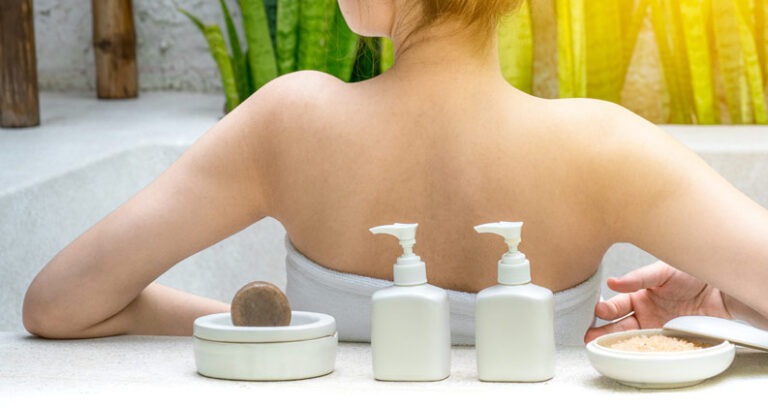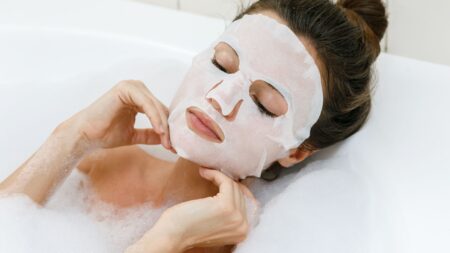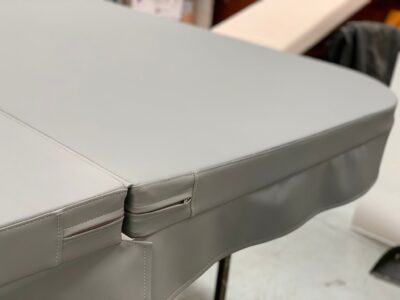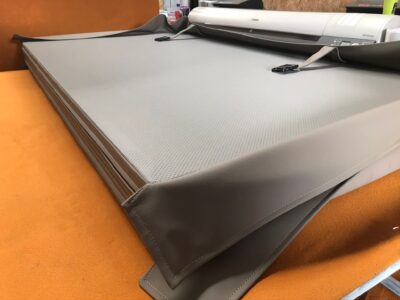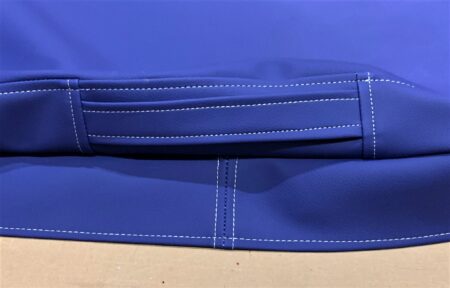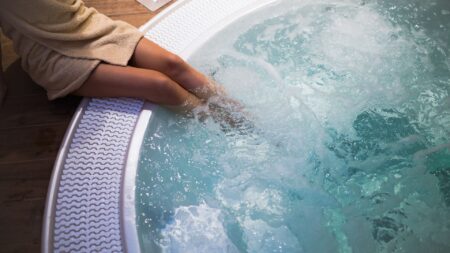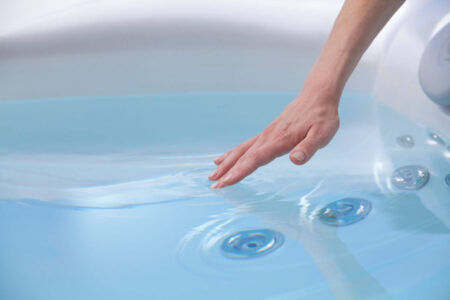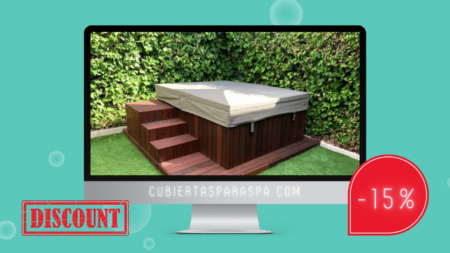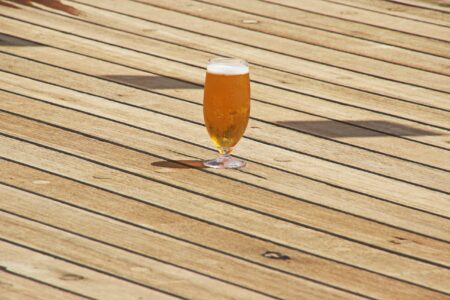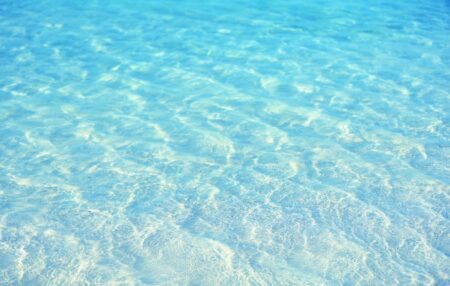With rising electricity rates, one thing on the minds of many hot tub and spa owners is how to save money on the cost of running their hot tub. Newer hot tubs and spas are becoming more energy efficient, but older or poorly installed hot tubs can still cost quite a bit to maintain. With that in mind, here are 9 ways you can make your hot tub more energy efficient and reduce your operating costs.
Repairing leaks
When new, most hot tubs are fairly well insulated. Over time, however, the foam insulation commonly found in hot tubs can become saturated with water and lose its effectiveness.
Foam insulation works by trapping heat in the air bubbles that make up the insulation. While air is a great insulator, water is not. If the foam gets wet and those air bubbles fill with water, the insulation loses most of its effectiveness.
If you notice a leak in your whirlpool tub, be sure to repair it as soon as possible. Even minor leaks can, over time, cause your hot tub to lose a ton of insulating value by slowly saturating its insulation. Not only that, every time you refill your hot tub water, you replace the water you already paid to heat with cold water that you will now have to heat.
Once the leak is fixed, be sure to remove all wet foam and replace it with fresh, dry insulation.
Replacing Your Old Hot Tub Cover
Old hot tub covers are often the main source of heat loss for hot tubs. Like hot tubs themselves, hot tub covers use foam to provide insulation. This foam is covered by a plastic vapour barrier that prevents it from becoming waterlogged in the hot tub. Over time, the cover will begin to take on water as the vapour barrier slowly breaks down.
Wet foam in hot tub covers is just as useless as wet foam in hot tub insulation. You will know your cover is starting to take on water when it begins to fall heavier than normal. This extra weight is water trapped in the foam. You should consider purchasing a new cover as soon as you notice a significant change in the weight of your hot tub cover.
When purchasing a new hot tub cover, make sure it has a “full foam seal”. This is an additional piece of foam that insulates between the two halves of the hot tub cover when the cover is closed. Without a full foam sealant, hot tub covers usually only come with two small pieces of foam at each end. These are useful to prevent evaporation but leave an uninsulated gap between the two halves of the cover.
Programming your filtration
One of the easiest ways to save on your hot tub energy costs is to schedule your filtration cycles.
All hot tubs need to filter the water to remove contaminants and keep the water clean and safe for use. To do this, it is necessary for one of the pumps to turn on and cycle the water through the filter for several hours per day. This adds up to a significant portion of the monthly cost of a hot tub.
Fortunately, most newer hot tubs allow some degree of control over their filtration, although they do so in different ways. Consult your hot tub owner’s manual to see exactly how to program yours.
Once you know how to change your filtration cycles, schedule them to run during the cheapest daylight hours to spend less without sacrificing water quality. To maximise your savings, some hot tubs even allow you to schedule different run times on different days. Use this to run the hot tub less on days when you don’t normally use the hot tub.
As an example of this, let’s say you normally only use your hot tub on weekends. In this case, your hot tub will not have to run both Monday through Thursday and Friday through Sunday. This is because fewer pollutants are being introduced and therefore there are fewer pollutants to filter out. In this scenario, it may be more practical to run your filtration for 4 hours a day, rather than the typical 8-12 hours.
Using economy mode
If you are going on holiday, or simply not going to use it for a while, check if your hot tub can be set to “economy mode”. Economy mode differs from standard mode in the way it heats the hot tub. Instead of constantly heating the water to maintain the set temperature, economy mode will only heat the water during the programmed filtration times.
Simply put, economy mode reduces your hot tub’s energy costs by running your heater less. The disadvantage of economy mode is temperature fluctuation. Since the heater is not running for long periods of time, the water temperature can vary quite a bit. This makes it less than ideal if you plan to use the hot tub. For this reason, it is best to only run the economy mode when you will not be at home for 2 or 3 days or more.
Some hot tubs, such as self-cleaning hot tubs, even have preset programmes that can automatically switch between economy mode and standard mode. These programmes are useful if you are going away for a few days but want to use your hot tub when you return, or if you are going on holiday.
Adding extra insulation
Most modern hot tubs are very well insulated. That said, in general, you can still do better. Adding insulation around the cabinet of your hot tub allows you to trap waste heat created by the pumps and heater and help protect the pumps and heater in the event of a power outage.
While this can increase the energy efficiency of the hot tub, do not completely fill the tub with insulation. Keep in mind that the pumps need air to cool, if they do not get enough fresh air they can overheat and potentially break down. Leave vents unobstructed and remove any added insulation in the summer to avoid this.
Hot tubs also include variable vents. These vents allow you to add fresh air in the summer to protect your pumps and seal them off in the winter for maximum energy efficiency.
In addition to adding more insulation, you can also purchase insulating thermal blankets that sit on top of the water. These help in two ways:
- Adding more insulation.
- Decrease evaporation. A significant amount of the total heat loss in well-insulated hot tubs comes from evaporation.
6. Replacing your old filters
Regularly clean or replace dirty hot tub filters. Water cannot pass through a dirty filter as easily as it does through a clean filter. This means that the pumps have to work harder to filter the water properly. For that reason, constantly drawing water through a dirty filter will reduce the life of your pump.
To keep your filters clean, remove them once every 1-2 weeks and run them under running water to clean out the dirt. Over time, oils and lotions also build up on the filters. To clean these oils and lotions, clean your filter in a chemical solution every 3-4 months. Cleaning only goes so far and your filter should be replaced once a year.
Turn off the air controls
The air controls on your hot tub should be turned off when you are not using the hot tub. The air they control will cool the water, making the heater work harder to compensate. The extra air also slowly increases your pH, which means you will have to add more chemicals to compensate.
Keep your cover locked
Be sure to lock the cover when you’re not using your hot tub. Cover locking clips help keep the cover firmly closed. Unlocked tub covers can lift in the wind or, if the air controls are left open, from the positive air pressure that builds up under the cover. This allows heat to escape and increases evaporation.
If the cover locking clips are broken, replacements can be purchased.
Lower your water temperature
One of the easiest and best ways to spend less to run your hot tub is to simply lower the water temperature. Depending on the outside temperature, lowering the temperature of your hot tub water by 1 degree can reduce your energy bill by 10-15%.
However, this does not mean that you should constantly change the temperature of your whirlpool tub. Often, the cost of heating the water back up to temperature can be more than you saved by lowering the temperature in the first place. Instead, try using your whirlpool tub 1-2 degrees cooler than normal.
To conclude
While buying a new hot tub is still the best way to ensure that you are spending as little as possible on running your hot tub, it is not always practical to do so. As you can see, there are ways to save money with your existing hot tub. Little things like lowering the water temperature or reprogramming your hot tub filtration can make a big difference to your energy bill.

